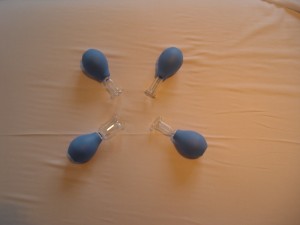Simultaneously diagnostic and therapeutic, NMT focuses on improved posture, pain relief, tension relief, improved joint mobility and reflex stimulation or sedation.
While relaxing tight, fibrotic tissue, enhancing lymphatic
and general circulation and drainage, and stimulating reflex benefits to the body, NMT also provides the practitioner useful assessment information.
NMT is efficient and versatile, providing a framework that ensures
all major muscle groups will be assessed and treated, and is easily customized to include more specific technique where appropriate.
MAT was developed by Erik Dalton, PhD. In his own words:
"The foundation of the program lies in early identification and correction of chronic strain patterns before they become pain patterns. The method incorporates a broad overview of many of to day's bodywork modalities. The resulting conglomeration of techniques is primarily aimed at fixing the most frequently encountered neck/back/extremity complaints. My method combines modified therapeutic techniques from Rolfing ®, manipulative osteopathy, and assisted stretching as well as joint-capsule and receptor routines."
"Working from the knowledge that the body's myofascial and skeletal systems are inseparable. What affects one always affects the other. Accordingly, Myoskeletal Alignment focuses on treating stubborn pain conditions by mobilizing joints through muscle manipulation."
MET evolved out of the ostepathic community as a means of nomalizing soft tissue structures before maipulating joints. Using muscle movement barrier, isometric contraction and breath control, target muscles are relaxed and lengthened. MET can be applied with infinite gentleness making it applicable and appropriate even in acute and painful situations. When applied using an isolytic contraction, MET effectively reduces fibrotic tissue in affected muscles.
Swedish massage is the most commonly used form of classical Western massage, generally performed in the direction of the heart, sometimes with active or passive movement of the joints. It is used especially for relaxation,
relief of muscular tension, and improvement of circulation and range of motion. (Mosby's Medical Dictionary, 8th edition. © 2009, Elsevier.)
Swedish massage includes effluerage, petrisage, friction, tapotement and vibration. Though less specific than other techniques, Swedish is a great way to relax and soften superficial muscles, preparing the body
for deeper, more specific work.
The craniosacral system is comprised of our brain, spinal cord, sacrum, and the membranes that surround and protect them. Cerebrospninal fluid flows within this system.
Craniosacral Therapy is a hands on approach without the tissue manipultaion common to massage. Gentle holding techniques fascilitate body unwinding and the release of joint restriction and muscle pain. Cranial
sutures are relaxed, enhancing the flow of cerebrospinal fluid and improving the functioning of the central nervous system.
Starting at the neck, cups are drawn across the tissue, pulling fluid toward the thoracic outlet valve in the upper chest. While particularly beneficial for sinus problems, face cupping also relieves muscular tension and pain around the temporal mandibular joint (TMJ). A visible difference in facial tissue is seen post treatment as facial contours are restored and wrinkles are softened. A series of ten treatments over a five week period restores proper sinus drainage and lymph flow.
